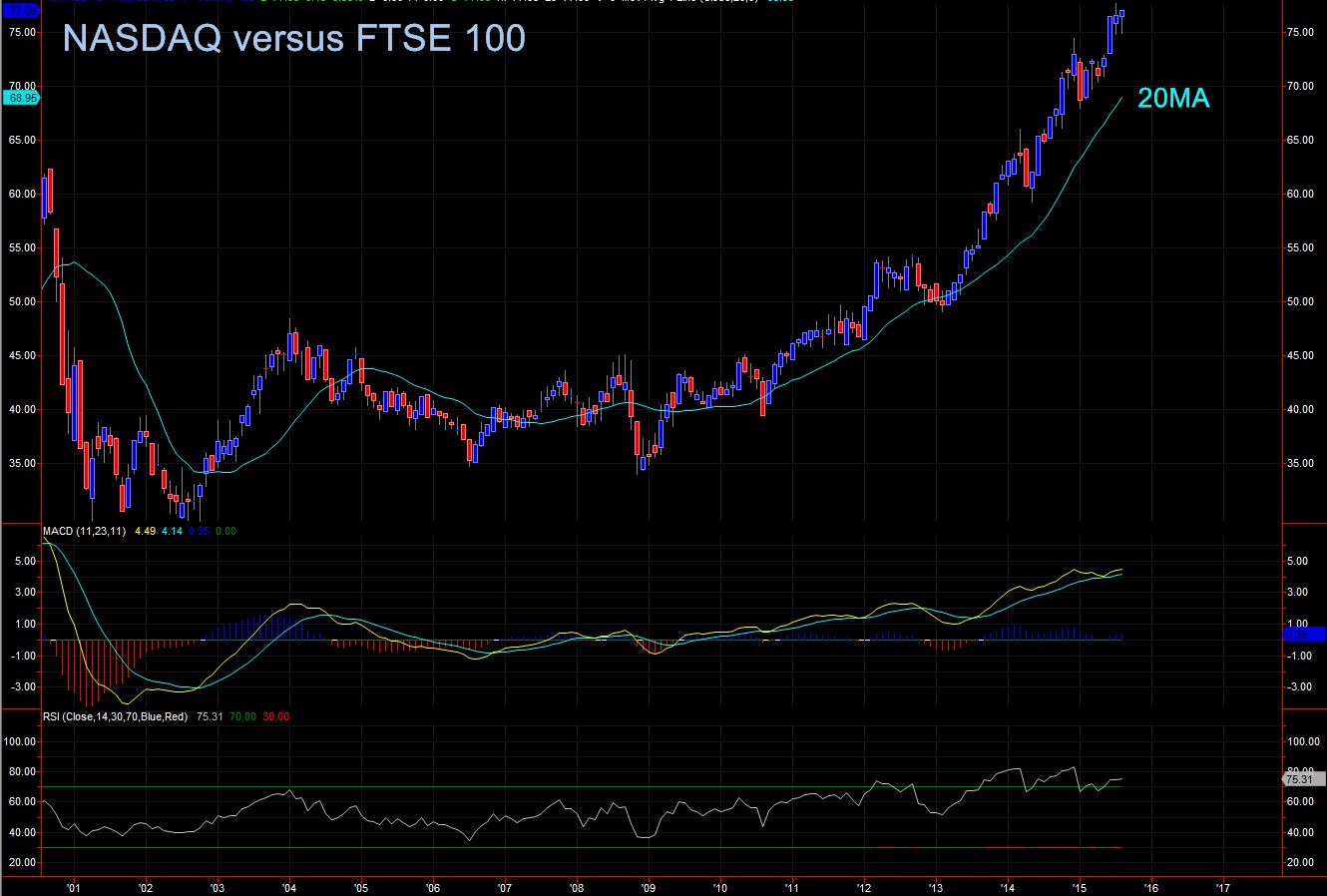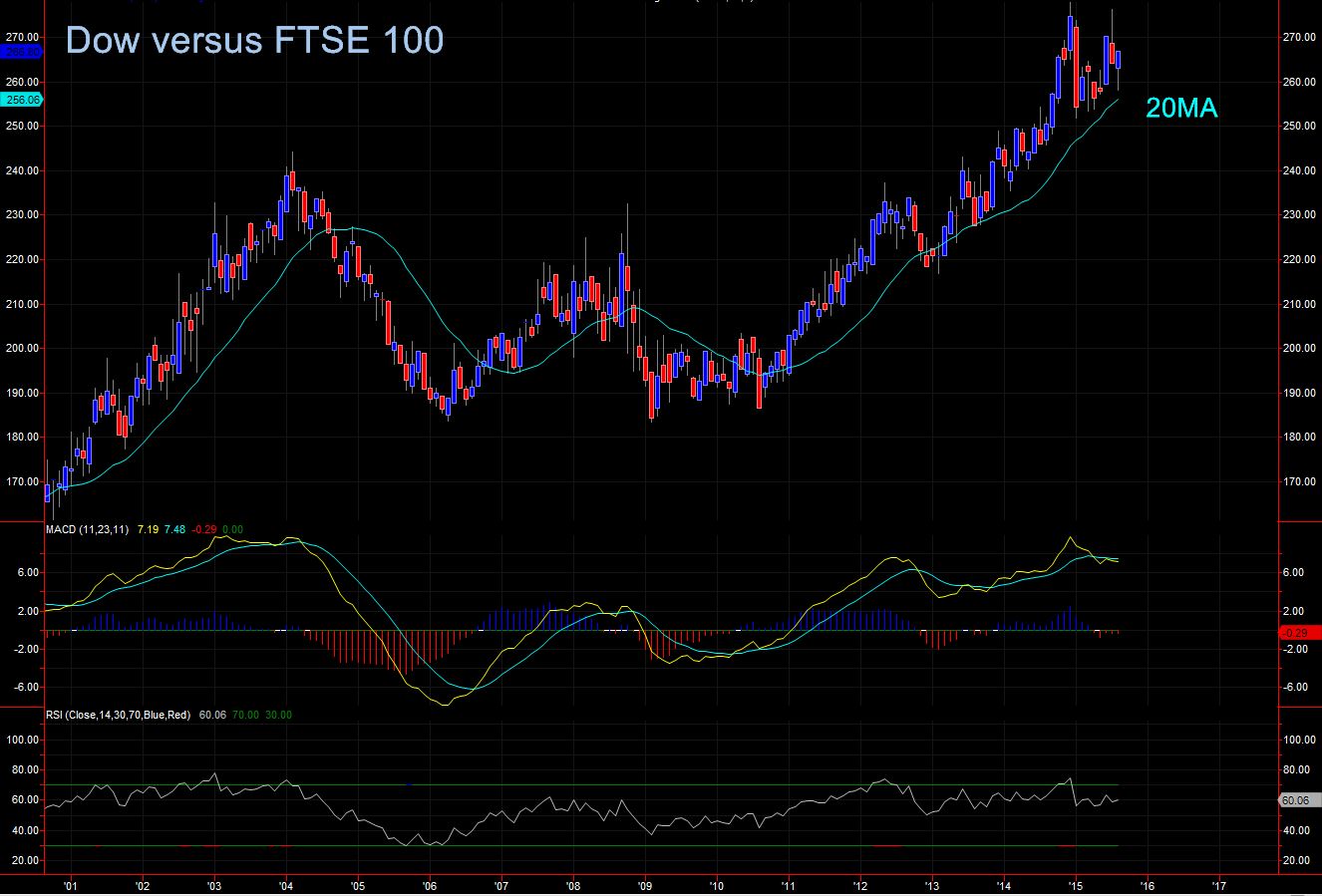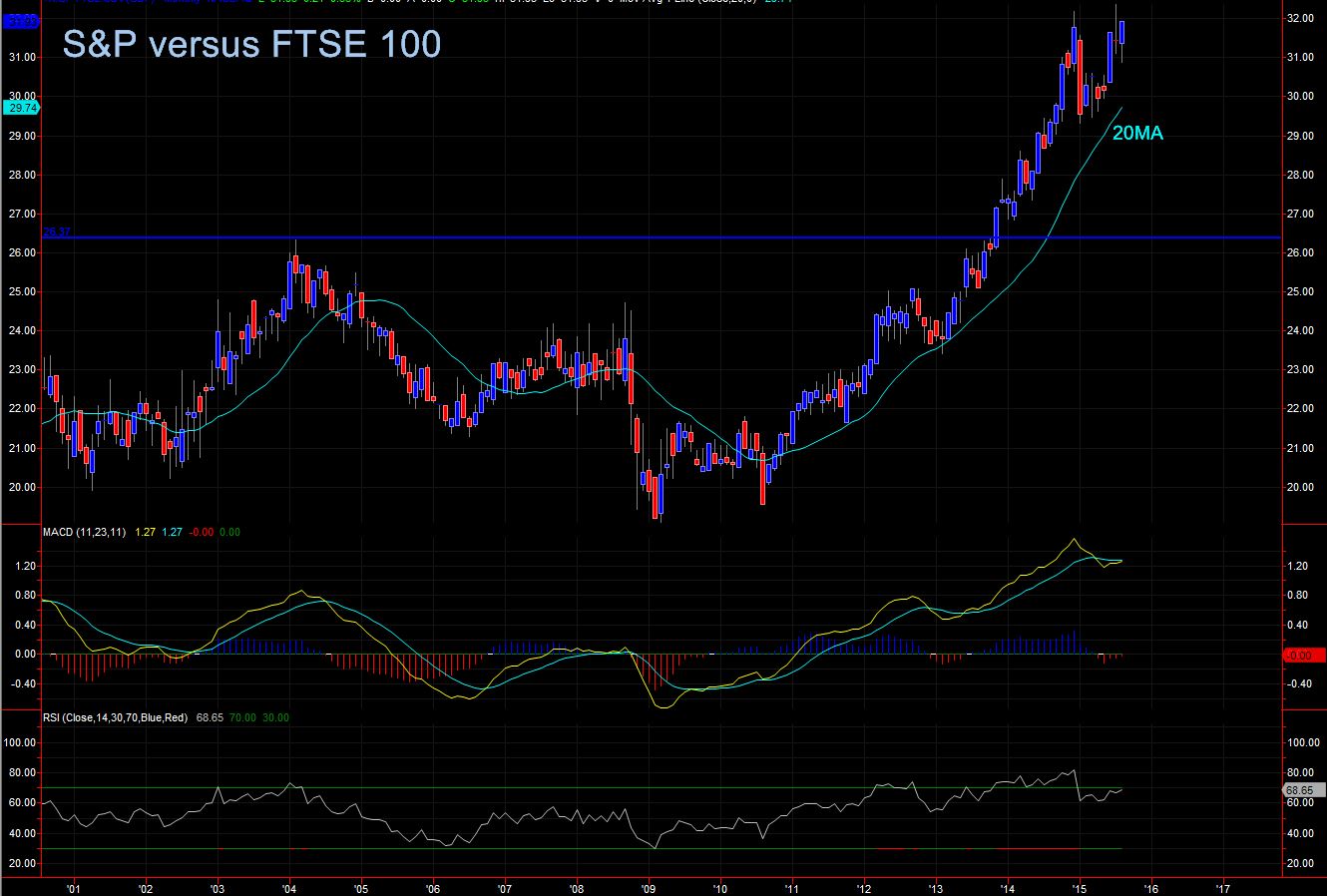Why the FTSE is the dog of the indices

Over the last ten years I’ve been to pretty much all the finance seminars you can imagine. From symposia run by Saxo Bank and SocGen to so-called training organised by people who, when you get there, it becomes obvious don’t trade. For example, one presenter was gaily saying that if he had a spare 15 minutes after lunch he’d “do some scalping”. Rrrrrright. Course you will mate. And then have a quick spin on Saturday afternoon round Monte Carlo and get placed in the Grand Prix, then back to yours for a barbecue, no doubt. Something that puts me right off is when people don’t know that ‘indices’ is the plural of ‘index’ and consequently try to talk about one ‘indice’.
Anyway, I mentioned indices in my last blog post and I thought I should do a bit of analysis on them. I’ve been saying for years that the FTSE is a bit of a waste of time because it’s constantly out-performed by other main indices, which it is.
The tricky bit with markets is spotting when changes are going to occur. And just because something is overdue doesn’t mean it’s going to happen. Think earthquakes. The big one is still elusive to many Pacific Rim cities, but that doesn’t mean it’s going to happen tomorrow, or this year, or even this century. So a correction in the market, or a bear market, will happen when it’s good and ready, not when it’s overdue by your or my reckoning.
At the start of this bull market I said that the NASDAQ would be the leading market in the early stages. I thought this was fairly obvious: it contains all the companies that hold little or no stock, and are by their nature more reactive to market conditions, and the most speculative in investment terms. Thus they should attract money before more traditional stocks where you might like to see an economic recovery before getting involved. This proved correct. I’ve used a very simple calculation to compare the pairs. I’ve divided the other index by the FTSE 100 (and multiplied by 100 for readability).

Not exactly a slouch, the Dow is the least exciting of the US comparisons with the FTSE, and the only one with any hint of a hint of weakness. The S&P has improved steadily against the FTSE since 2009. It’s a pretty good looking chart. Interestingly the peak before the current bull market was in 2003. In this current market phase though, the FTSE has been decidedly, well, rubbish really. The NASDAQ is looking great versus the FTSE, and even now is not pushing the RSI too hard and the MACD can always go up. That is one good looking chart.


So we do seem well placed to see the US continuing to outpace the FTSE. Remember this is irrespective of whether the markets go up down or sideways: we’re looking at relative performance.
How about the DAX then? Well it looks a little different. When the US markets were outperforming the FTSE in 2003, the DAX was weakening. Since then we saw a move up, followed by a lengthy consolidation and from 2013 another move up. The DAX had a strong rally at the beginning of the year so either way a bit of consolidation now is not unexpected. It could still lose ground to the FTSE and not change the overall trend though.

With no definitive short signal on the FTSE it’s a bit premature to be ringing death knells. All the markets have run out of steam at the moment. We should definitely be watching and waiting though. If you’ve been in other markets than the FTSE during the last six or seven years, then hats off to you.
All charts created using TradeStation
Comments (0)